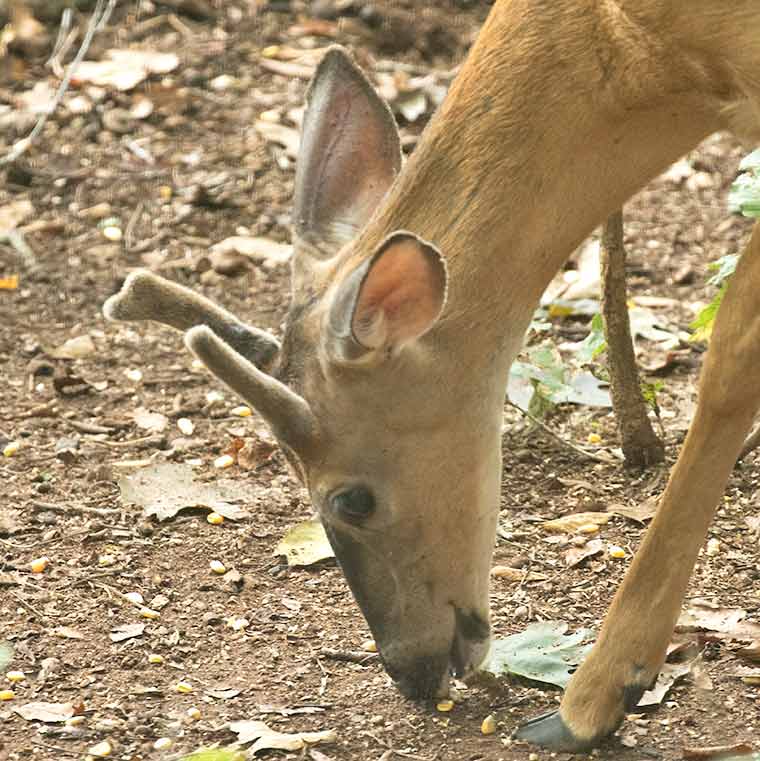This little buck White-tailed Deer (Odocoileus virginianus) came to help itself to some corn at our feeder in the back yard. Its antlers are just developing at this time of year. Such antlers are said to be in “velvet”. Members of the deer family typically grow a new set of antlers annually. At the stage seen here, the developing bone of the antler is surrounded by a highly vascularized tissue called the velvet. This tissue supplies nutrients to the growing antler. At first cartilage is deposited, and then it is converted into bone. One of this animal’s antlers has started to branch while the other remains a spike.
The cartilaginous tissue of developing antlers is an ingredient in traditional Chinese medicine. In the West, dried and powdered deer antler called “velvet antler” is used as a dietary and body-building supplement. New Zealand is the largest exporter of velvet antler. Red deer (Cervus elaphus) are used as the source of the material. The animals are allowed to grow their antlers out about 2/3 of the way to maturity, at which point the developing antlers are removed and used in the preparation of velvet antler. No medical tests at present support purported health benefits of the material.

